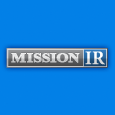International Stem Cell Corp. (ISCO) Reduces Risk
Post# of 124

Although cash burn for International Stem Cell Corp. (OTCQB: ISCO) currently stands at over $0.5 million per month, a number likely to increase with the progression of its clinical trials for Parkinson’s disease (PD), risks have been mitigated thanks to the company’s commercial operations. ISCO is an early stage biotechnical company developing biomedical, therapeutic, and cosmeceutical applications for its proprietary form of pluripotent stem cells known as human parthenogenetic stem cells (hpSCs). Although ISCO is carrying out intensive research to develop a stem cell therapy treatment for PD, the company reduces any financial risks with the more commercially-oriented side of its operations.
ISCO’s commercial operations are made up of Lifeline Skin Care (LSC) and Lifeline Cell Technology (LCT). LCT develops, manufactures, and commercializes over 130 human cell culture products. These cells are sold through International Stem Cell Corp.’s website. On the other hand, LSC develops, manufactures, and markets luxury skincare products through a variety of channels, including a branded website, dermatologists, plastic surgeons, and spas, as well as through Amazon (NASDAQ: AMZN) and DermStore. Since 2012, ISCO’s biomedical business has grown by 19%, a rate nearly three times the industry’s rate. This branch of the company grew by 15% between 2014 and 2015, and the operating margins rose to 31% from 21.7% in 2014 and 12.4% in 2013. LSC, however, is still a small player in the global skincare market. That said, the skin care brand still saw revenue grow at a CAGR of 17% in recent years and reported total revenue of $3.5 million in 2015.
Although there are still sensitivities relating to therapeutics products developed by ISCO, these are not insurmountable. In the International Stem Cell report by Edison (http://nnw.fm/T8LoT), sensitivities were addressed accordingly. Valuations done by Edison found that ISCO’s skin care business is estimated to grow to sales of $4.8 million by 2025, while its biomedical business is expected to reach $10.5 million in sales in the same amount of time. Although both businesses still hold a number of risks due to the nature of their markets and the fact that they are still relatively small and growing companies, these risks have been highly mitigated to minimize loss and maximize long-term profits.
For more information, visit www.internationalstemcell.com
Please read full disclaimers at http://disclaimer.missionir.com
 (0)
(0) (0)
(0)